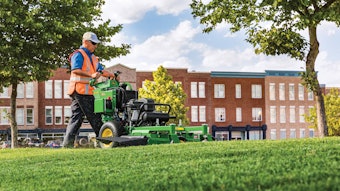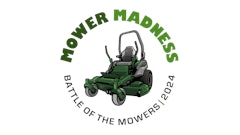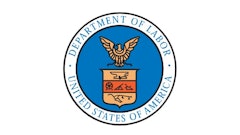
Several landscape professionals say that despite labor challenges, inflation, pricing increases and a natural slowdown after COVID-19, their companies still experienced double-digit growth in 2023.
Over the course of several months, Green Industry Pros spoke to manufacturers, landscape professionals and association representatives about the current state of the green industry.
From those interviews and surveys, here is a look at how 2023 went for the industry and what to expect for 2024.
2023 in review
Overall, many landscape companies throughout the industry experienced strong growth in 2023—though not as strong as in the pandemic years.
“A large amount of work carried over from 2022 provided a nice start for the company with continued strong sales throughout the year. This combined with our steadily growing maintenance division provided opportunity for all of our employees,” says Keith Bowman, president of horticultural service and business development for McHale Landscape Design headquartered in Upper Marlboro, Md. “We believe the current state of the landscape industry is very strong. People appreciate green space more than ever. Additionally, our industry raises its professionalism each year.”
Darren Gruner, founder and CEO of Turf's Up Radio News, agrees that the industry experienced a stronger than expected year in 2023.
"The economic outlook for the green industry in 2024 seems nothing but promising," Gruner says.
Of course, despite the growth experienced by many companies, the industry still had to contend with quite a few challenges.
Labor
Topping the challenges list again: labor. An issue before COVID-19, the labor crisis has only intensified postpandemic.
“One issue the green industry continues to face is fulfilling workforce and staffing needs,” says Brant Kukuk, compact equipment manager for Ditch Witch. “Like most other industries, the need for skilled workers remains high as project demands remain high.”
Potential workers gravitating toward less labor-intensive industries may be one contributing cause of the continued shortage, according to Edward Arens, owner at E&M Outdoor Services in Monticello, Minn.
“I’ve noticed some of the younger employees we have looking for positions that don’t require as much physical labor,” Arens says. “One of the things we took advantage of in 2023 is dialing in our hiring process to try and find more skilled labor, someone with experience, instead of just hiring anyone to do the work.”
Another contributing factor could be stricter immigration laws.
For example, Florida recently enacted laws that may have intimidated some of the potential workforce, says Peter Lucadano, co-owner and CEO of RedTree Landscape Systems, headquartered in Holiday, Fla.
“The Hispanic workforce is a backbone in our state for the green industry, and even though many of those folks were properly credentialed, they become very concerned about the severe standards put in place by Florida, and many families wound up relocating to states that were less restrictive toward immigration,” Lucadano says.
In order to combat those issues, Lucadano says RedTree Landscape Systems held workshops and sitdown meetings with its employees to help everyone better understand the laws.
“We’re very fortunate that we have a diverse mix of ethnicity that works for us—we always encourage that,” Lucadano says. “Where some of (our employees’) local communities were panicking, we tried to reassure our staff and their families that a lot of their concern was unfounded. It turned out tremendously well for us because we were able to retain most of our workforce, whereas many of our large competitors lost quite a few workers.”
Bowman of McHale Landscape Design says that to fill the labor gap, companies need to promote the wide variety of fulfilling careers available in the industry.
“Colleges, universities and trade schools aren’t producing enough new talent. It’s not their fault, but it’s forced MLD to start growing employees,” Bowman says. “There are always people looking for a career change or are having a hard time deciding what they want to do. There is something for everyone in this line of work: creativity, logistics, horticulture, technology, just to name a few.”
High interest rates
Another big challenge in 2023 came with the unforeseen increase in interest rates.
“I think most of us planned for interest rate increases between 4 and 6 percent, but realizing 9.5 percent interest rates is a very significant hit to everybody's bottom line,” says Christin Wam, senior director of marketing, Ferris Mowers, Briggs & Stratton. “And, it’s a double-edged sword. Not only are we paying more, but end user customers are either putting off purchases or opting for lower-priced models to offset the steep increase in financing.”
Wam notes that these interest rates slammed many companies just as manufacturers were recovering from supply chain issues that plagued them throughout the pandemic.
“Production was getting back to normal and inventory in our warehouses and on dealer floors was increasing, (but) interest rates slowed down the demand,” Wam says. “So, within the industry, we saw significant promotions and discounting to move inventory out of dealerships. That said, dealers are still sitting on a lot of inventory, which we’ve had to factor into our 2024 forecasts.”
Inflation and increased pricing
Interest rates aren’t the only item that’s risen. Many landscape companies have had to deal with inflation and increases in pricing for equipment and materials.
“Every industry was hit with price hikes—just like at the grocery store to the average American,” Lucadano says. “So far us, fertilizers, herbicides, equipment, trucks—everything just shot up.”
Lucadano notes that instead of passing on that level of increase to customers, RedTree has begun to reevaluate its maintenance clientele.
“Simply put, those clients that are not improving their properties with landscape enhancements will no longer be a maintenance client fit for our company,” Lucadano says. “Maintenance is a very expensive apparatus to keep in place with the trucks, the personnel, the equipment and the insurance, and you have to be really selective about where you put those crews.”
E&M Outdoor Services approaches this issue in another way: The company preordered products for the next season in order to have a better idea of what its pricing will need to be.
“The reason we do that is so we can control pricing ahead of the next season,” Arens says. “So, for example, if our suppliers are charging $2 more per bag of fertilizer, we know that for 2024, we will have to adjust prices to offset that.”
Arens notes that items such as fuel prices leveled out over the past year or so, but general items were still up compared to the last three to five years.
Weather patterns
In some parts of the country, weather played a significant role in how 2023 panned out.
For example, Minnesota has experienced drought for the past two seasons, according to Arens.
“That had an impact, but we set ourselves on a monthly schedule, so for HOAs, we could still bill whether or not we went,” Arens says.
Lucadano says Florida suffered the worst drought conditions than it had in more than 10 years.
“That places a significant amount of water restrictions on our tropical climate, and many of the landscape maintained by commercial contractors suffered during that time period,” Lucadano says.
Lucadano says his company counseled clients on proper irrigation techniques.
“We’re trying to educate clients that irrigation is a supplement, but it can’t be a 100 percent replacement for precipitation,” Lucadano says. “We tried to grow our irrigation division, add on additional staff and vehicles to better accommodate demand and offered supplemental water and water trucks where possible.”
For more on the current state of the industry, check out these articles below:
- Learn about top industry trends here.
- Check out what regulations are coming down the road here.
- See what landscape pros' top advice is here.
- Discover what experts' individual takes are in the following Q+As:
- Ditch Witch
- Volvo Construction Equipment
- RedTree Landscape Systems
- Briggs & Stratton
- E&M Landscape Services
- McHale Landscape Design
- Vectorworks
- See additional commentary on the State of the Industry here.




























